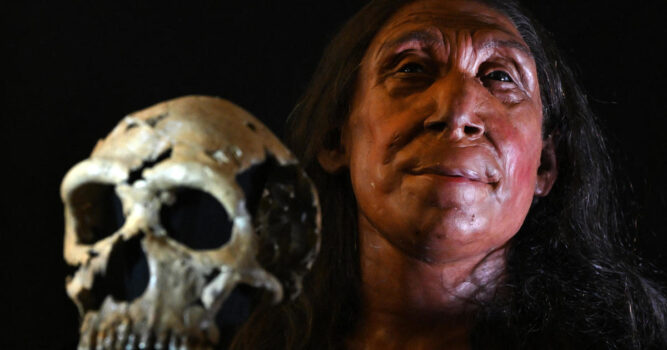A fossil of the inside ear of a six-year-old Neanderthal baby that confirmed indicators of Down syndrome appears to point that the traditional, now-extinct species had been compassionate caregivers, based on a new study within the publication Science Advances.
Archeologists in japanese Spain unearthed the fossil in 1989, which confirmed the entire inside ear anatomy of the Neanderthal baby who scientists nick-named Tina. The abnormalities in Tina’s ear are identified solely in folks with Down syndrome, making the fossil the earliest-known proof of the genetic situation.
Scientists say that, to outlive for six years, Tina would have required care from the community round her.
“The pathology which this particular person suffered resulted in extremely disabling signs, together with, on the very least, full deafness, extreme vertigo assaults and an incapability to take care of steadiness,” paleoanthropologist Mercedes Conde-Valverde, who was the lead creator of the research, advised the Reuters information company. “Given these signs, it’s extremely unlikely that the mom alone might have offered all the mandatory care whereas additionally attending to her personal wants. Subsequently, for Tina to have survived for no less than six years, the group will need to have constantly assisted the mom, both by relieving her within the care of the kid, serving to together with her each day duties, or each.”
Neanderthals, or homo neanderthalensis, had been a extra robustly constructed species than homo sapiens, our human ancestors, and had a really pronounced forehead. Analysis has proven that they had been clever, looking in teams and creating artwork, they usually could have had language abilities.
They lived between 430,000 and 40,000 years in the past, and went extinct quickly after homo sapiens unfold into their territory.
The exact age of the fossil of Tina’s ear has not been decided.
Scientists nonetheless debate what the explanations had been for Neanderthals to apparently have cared for sick members of their group like Tina.
“There are authors who consider that caregiving happened in a context of reciprocal selfishness between people capable of reciprocate the favor, whereas different authors argue that help to sick or injured people amongst Neanderthals went past reciprocal selfishness and was produced by a real feeling of compassion,” the research mentioned.





